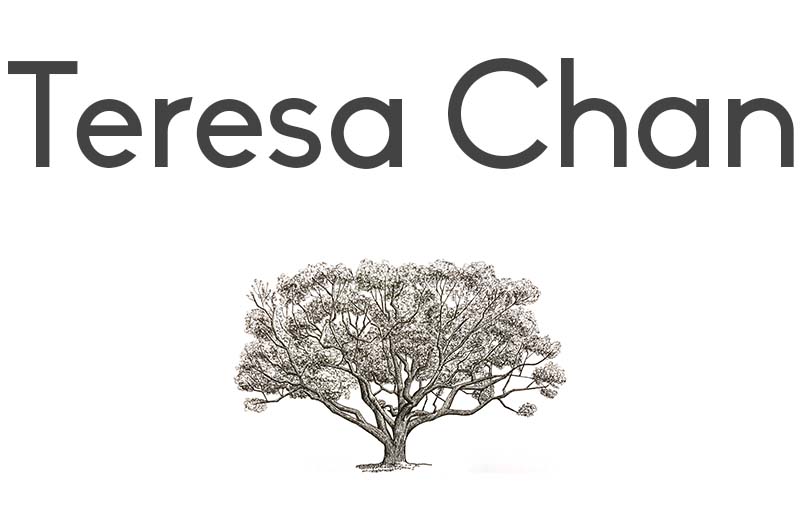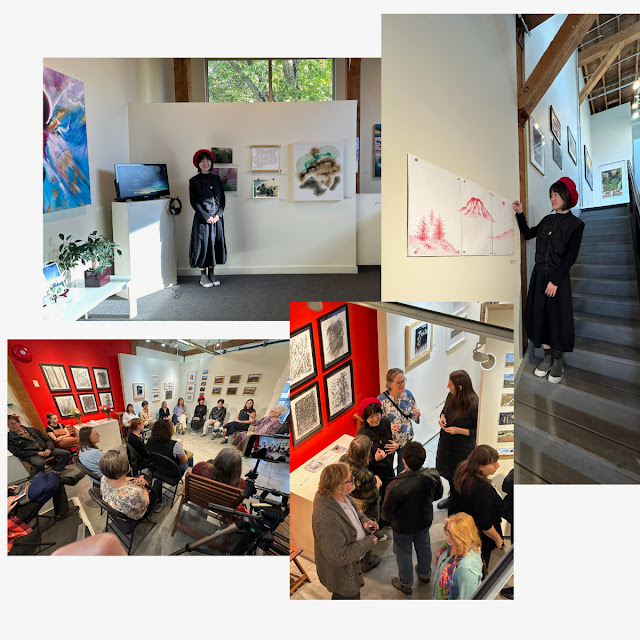Labels:
Exhibition
,
Floating Ink
[Exhibition] We made it through the Wilderness
The triptych depicts the landscape of Wells using the Chinese word teacher stamp 改正 [goi2][jing3], which means 'correction' in English.
The town of Wells and the surrounding regions (on the shared territory of seven First Nations: 𝙇𝙝𝙩𝙖𝙠𝙤, 𝙉𝙖𝙯𝙠𝙤, 𝙇𝙝𝙤𝙤𝙨𝙠'𝙪𝙯, 𝙐𝙡𝙠𝙖𝙩𝙘𝙝𝙤, ?𝙀𝙨𝙙𝙞𝙡𝙖𝙜𝙝, 𝙓𝙖𝙩śū𝙡𝙡, 𝙎𝙞𝙢𝙥𝙘𝙬, and 𝙇𝙝𝙚𝙞𝙙𝙡𝙞) have gone through multiple transformations since miners and prospectors first moved in more than 150 years ago. Mining, logging, and wildfires have been changing the natural landscape and shaping the community's livelihood.
Jack of Clubs Lake, a 2-km-long lake surrounded by forest at the entrance of Wells, was heavily polluted by mining. I and fellow artists visited the lake for plein air during the residency in spring of 2024. While the ecosystem is taking its time to recover, a new gold mine has been approved. The lake will soon no longer be the same as when we visited.
In the Artists Talk, Skai Fowler, the facilitator, asked a thought-provoking question: In what ways can we navigate art to contribute to a healthier environment? I have been asking myself many times because whatever we make extracts resources. Can I make something better than nothing? I am aware of the sustainability of materials, and that's how I started craving foliage on the streets. The philosophy of East Asia aesthetics fascinates me, and the production of sumi ink and rice papers seems to have a smaller environmental footprint. Therefore, I explored these materials when I restarted making art after moving to a new country.
But there was a time when I felt lost. I wanted to make large vibrate colour work to meet popular tastes. So, I went for using thick paper and chemical additives. After countless failures, I questioned why I pursued something other media like acrylic and printmaking could already do. More importantly, what is the beauty and meaning I genuinely appreciate?
The simplicity and subtleness of making art with nature. And it takes time.
Opening reception: Oct 10 (Thur), 5:30 pm to 8 pm
Artists talk moderated by Skai Fowler: Oct 12 (Sat), 4 pm
【About the exhibition】
"We made it through the Wilderness" is a collective show about landscape and what it means to be an artist at this point in our climate history.Curated by:
Diane BluntFeaturing:
Zoe Alexis AbramsJudy Blue Anderson
Lee Angold
Afifa Bari
Diane Blunt
Gizem Candan
Teresa Chan
Lisa Cristinzo
Levi DeCoste
Ana Diab
M Gnanashihamany
Shawn Grey
Alexandra Iorgu
Taline Kavoukian
Hannah Materne
Michelle Purchase
Annie Robinson
Liz Toohey-Wiese





